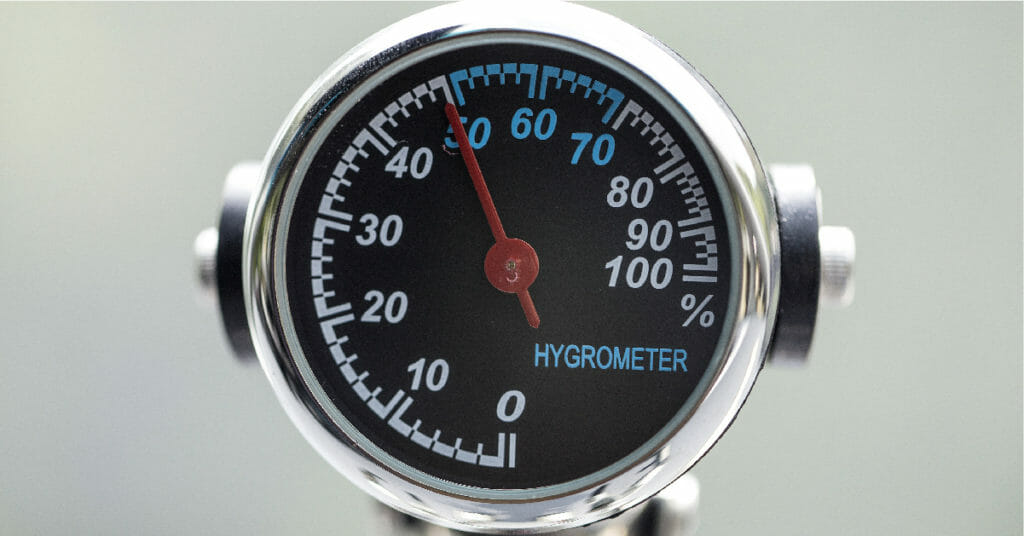What is Relative Humidity and Why Does it Matter

Relative Humidity Defined by the Experts
According to NOAA (National Oceanic and Atmospheric Administration), Relative Humidity, or RH, is defined as “a ratio, expressed in percent, of the amount of atmospheric moisture present relative to the amount that would be present if the air were saturated. Since the latter amount is dependent on temperature, relative humidity is a function of both moisture content and temperature. Relative Humidity is derived from the associated Temperature and Dew Point for the indicated hour.”
SOURCE: https://graphical.weather.gov/definitions/defineRH.html

So what does that mean in layperson terms? Think of the air as a bucket and the amount of water in the bucket as the moisture content. The amount of water in the bucket relative to the amount of space available in the bucket is the relative humidity. In other words, a half-filled bucket would represent 50% Relative Humidity in this example. Now if you can imagine the size of the bucket growing as temperature increases or shrinking as temperature decreases (without changing the amount of water in the bucket) you can understand how Relative Humidity will increase or decrease with temperature changes.
What Industries are Affected by Relative Humidity?
Relative humidity matters in a variety of industries for a number of reasons. So let’s take a look at how it can affect businesses in several different settings and industries.
Energy & Utilities
High humidity levels in the environment have a direct impact on the infrastructures and electrical workings of bridges, water treatment facilities, substations, switchgear rooms and wastewater treatment plants.
Self-Storage Facilities
In a storage facility, ensuring that stored goods for patrons don’t get ruined is crucial. High relative humidity can lead to mold and mildew damage to documents, boxes, wood furniture, and upholstery. High RH also leads to comfortable conditions for pests.
Cold Chain Facilities
In a cold chain facility, humidity and temperature must be exact to ensure that items are kept in their proper conditions and condensation is eliminated. Whether storing food or chemicals, keeping consistent humidity levels is key to preventing ice buildup, slip hazards, and damage to equipment and stored goods.
Why is Relative Humidity Important?
Whether you’re storing goods or maintaining specific climate settings for your personnel, maintaining the correct relative humidity is the only way to ensure mold, mildew, condensation, and ice don’t interfere with your everyday business.
Unfortunately, many don’t understand how to control relative humidity and end up using inefficient and ineffective practices. Using an air conditioner to lower humidity, for example, does very little to solve the problem. Besides Air Conditioners being inefficient, many times an Air Conditioner will exacerbate the issue by lowering the temperature and increasing the relative humidity (remember the bucket!).
Learn More About Relative Humidity
Solving the humidity issues in your facilities is the best way to ensure your goods and personnel can enjoy proper working conditions. Learn more about relative humidity here on our blog, then contact a member of our team to find out if relative humidity is affecting your business bottom line.
Published on Aug 17 2018
Last Updated on Apr 10 2024
Categories: Cold Chain, HVAC Systems, Water Treatment
Tags: HVAC, relative humidity
